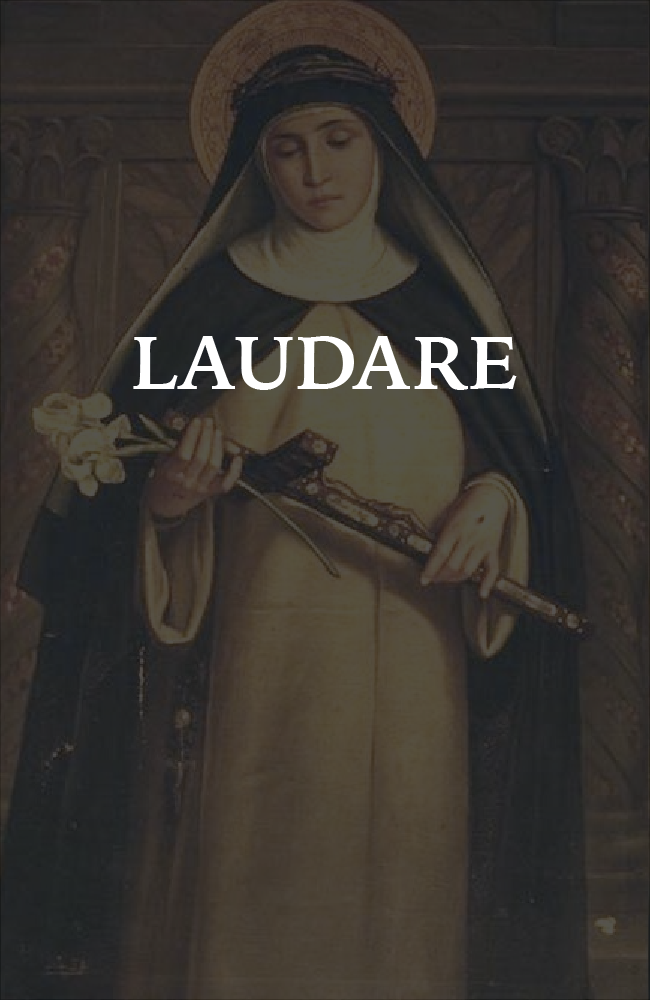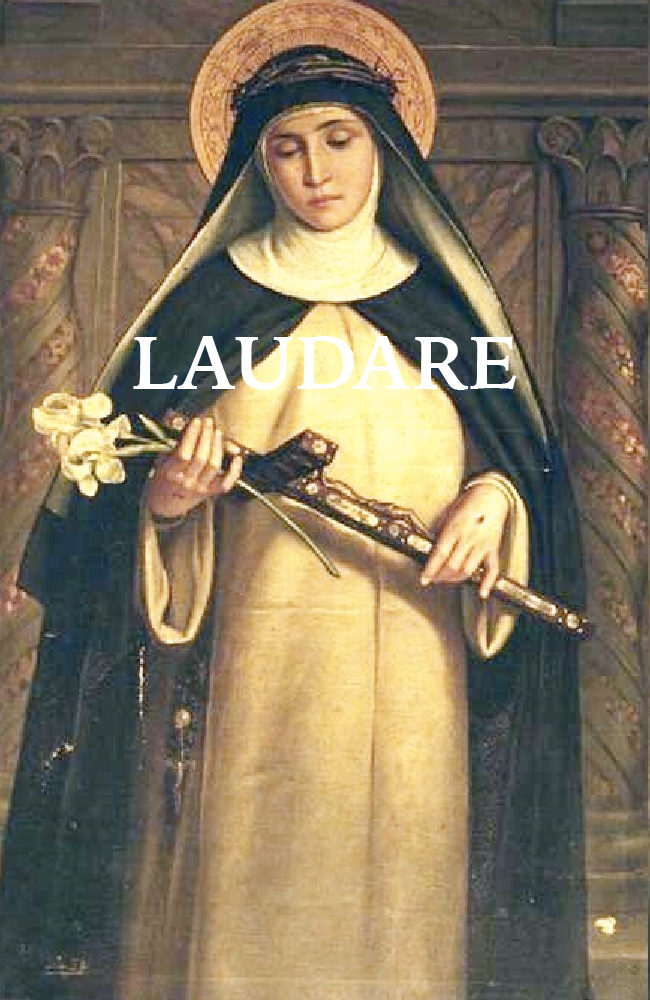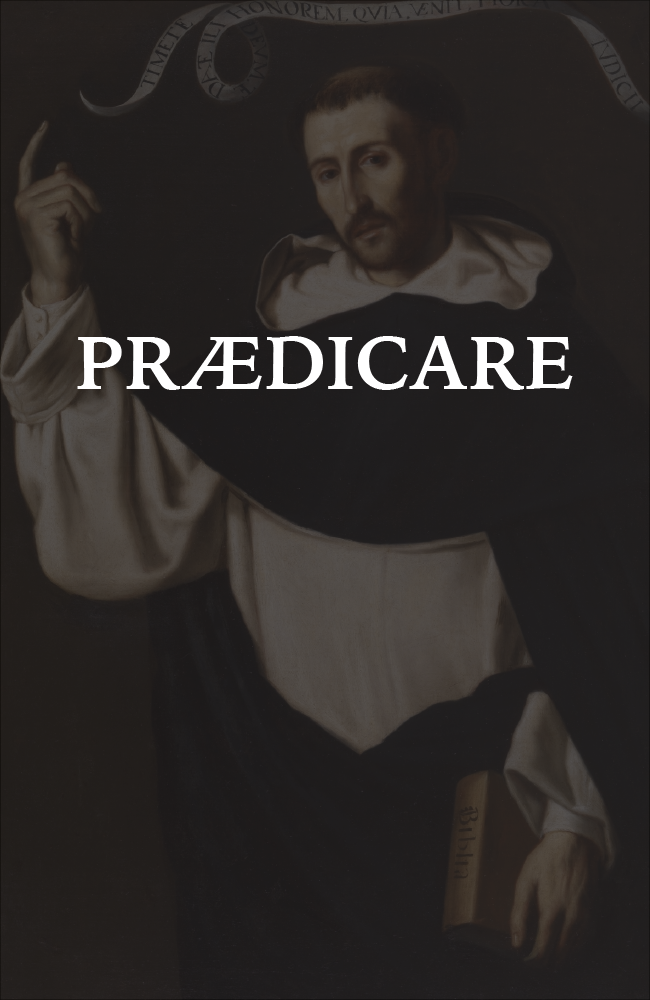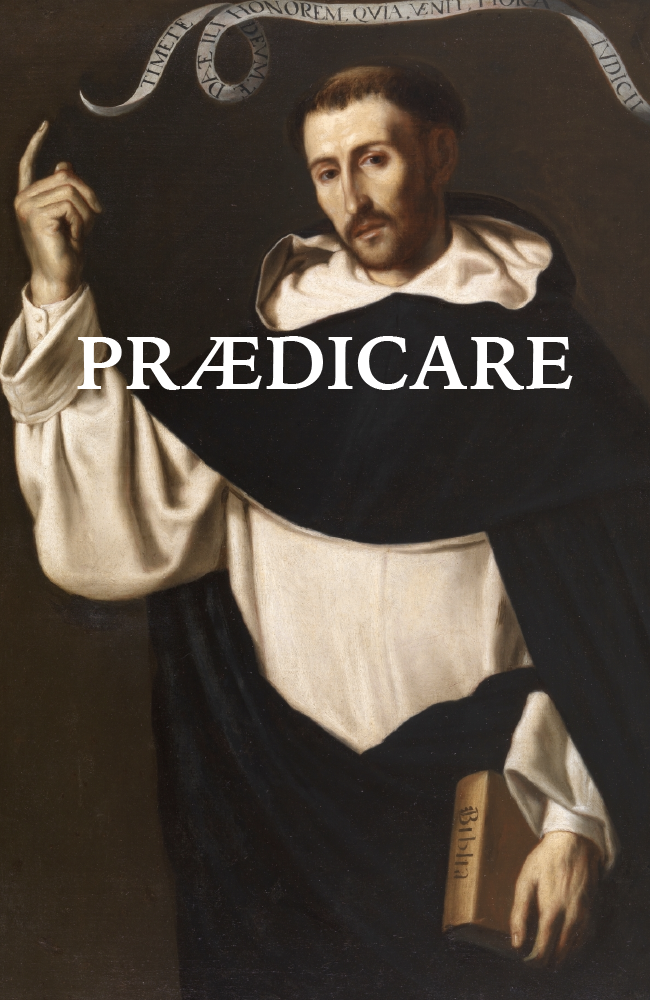ORDER OF PREACHERS

For 800 years the mission of the Order of Preachers has been to proclaim the Gospel to every corner of the world. We do this for one simple reason: that every soul may come to know and love Jesus Christ.
It was for this reason that St. Dominic de Guzman founded the Order of Preachers in 1216. Traveling through Spain and southern France with the Bishop of Osma, he encountered many confused people who believed that the physical world was evil, and created by an evil god. Dominic saw the need for good preachers who could explain the truth of the Catholic faith and reconcile those who had fallen away.
As members of the Order of Preachers, we are called to follow in Dominic’s footsteps, imitating his mercy and preaching the Gospel of Jesus Christ in and out of season. Our life in common, along with our time in study and at prayer, allows us to share the fruits of our contemplation and proclaim the good news to every land and nation.
The Dominicans have given the Church some of her greatest saints, including: St. Thomas Aquinas, St. Catherine of Siena, and St. Martin de Porres. We have spread devotion to the Blessed Virgin Mary through the gift of the Most Holy Rosary, promoted the Holy Name Society and the Angelic Warfare Confraternity since their earliest days, and have exclusively served as Theologian to the Papal Household.
The Thomistic Institute is part of the Province of St. Joseph.






ST. DOMINIC
Dominic was born in Caleruega, Castile, Spain, after 1170. First educated by an uncle who was a priest, he was later sent to Palencia to study arts and theology. There, Dominic sold his books to provide for the needs of the victims of a local famine. He then joined the chapter of the regular canons of Osma, under the priorship of Diego de Acebes. Engaged in a demanding form of life, he left the cloister in 1203 or 1204 to accompany Diego, already bishop, to Northern Europe on a diplomatic mission. Crossing the region of Toulouse, he discovered the Albigensian heresy, which then ravaged the South of France. A missionary desire grew in Dominic and he wanted to make Christ known to the pagans.
In 1206, after a second trip to Northern Europe, Diego and Dominic, on their return journey to Spain, meet in Montpellier with the papal legates charged with converting the heretics. They advised them to go on foot, without gold or silver, as « evangelical men ». Diego, sending his luggage back to Osma, set out with Dominic to preach in apostolic poverty. Before November, Diego proposed to the Pope to establish a long-term mission in Languedoc, the south of France. At the end of 1206, he established a “praedicatio” centred in Prouilhe, of which Dominic was the effective leader. It was there, at the foot of the hill of Fanjeaux, that some women converted from Catharism settled to lead a religious life. A few companions joined Dominic and travelled with him through the war-torn region.
In 1215, the group moved to Toulouse to a house provided by Pierre Seilhan. Upon Dominic’s return from visiting the Lateran council, the small group of preachers adopted the rule of Saint Augustine and the customs of the Premonstratensians. On December 22, 1216, the Pope confirmed the community of Toulouse and, on January 21, 1217, he used the name « preachers » to designate the vocation of the brothers.
Dominic’s missionary call was universal. In 1217, he dispersed the small group of his brothers. Some left for Spain, others for Paris, others still supported the nuns of Prouilhe. Dominic himself went to Italy to report to the Pope on his action. He sent brothers to Bologna. Like Paris, this city was an important university centre. Vocations flowed in; the Order adopted laws and organized itself into provinces during the first General Chapters celebrated in 1220 and 1221. Dominic, exhausted, died in Bologna on August 6, 1221, on his return from a preaching mission in Lombardy. Pope Gregory IX canonized him in 1234.


